30 Incredible Landmarks in Athens: Your Local’s Guide for 2024
The mention of landmarks in Athens probably automatically causes your mind to conjure up images of the ancient Acropolis. After all, the magnificent Parthenon is essentially the postcard image of Athens.
However, notable historical sites and landmarks in Athens go way beyond the Parthenon and Acropolis hill. They are abundant.
This is the birthplace of democracy after all. At various points throughout history, Greece has been home to the most important and developed civilisation in the world.
A Little History of Greece
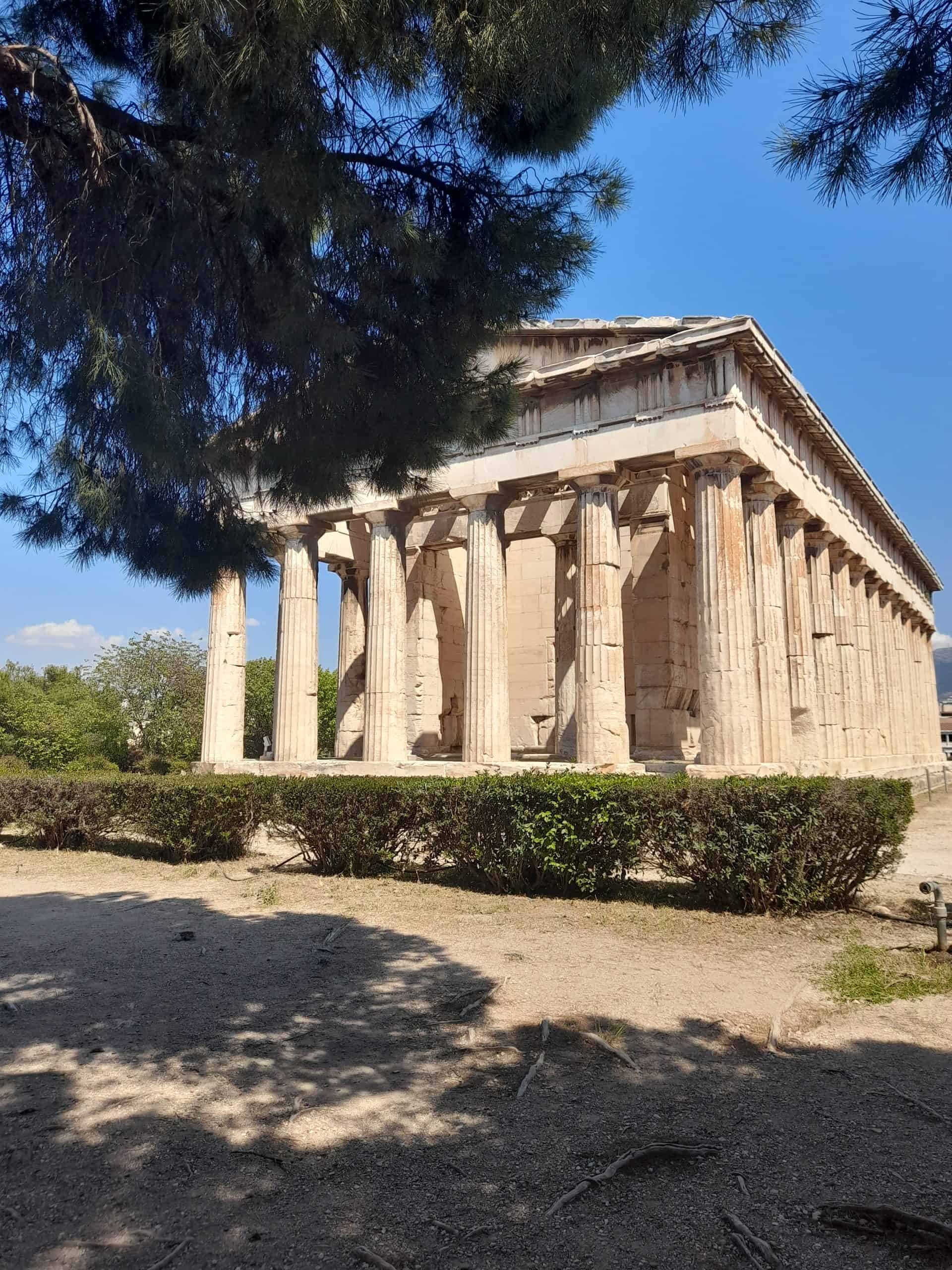
Greece has been inhabited for more than 4,000 years. Yet the “golden” era of Greek civilisation took place around 2,500 years ago.
During this time, Greece was the birthplace of some of the most notable writers, philosophers, poets, artists, athletes and architects that the world has ever seen. To this day, they remain unparalleled.
Periods of Ancient Greek History
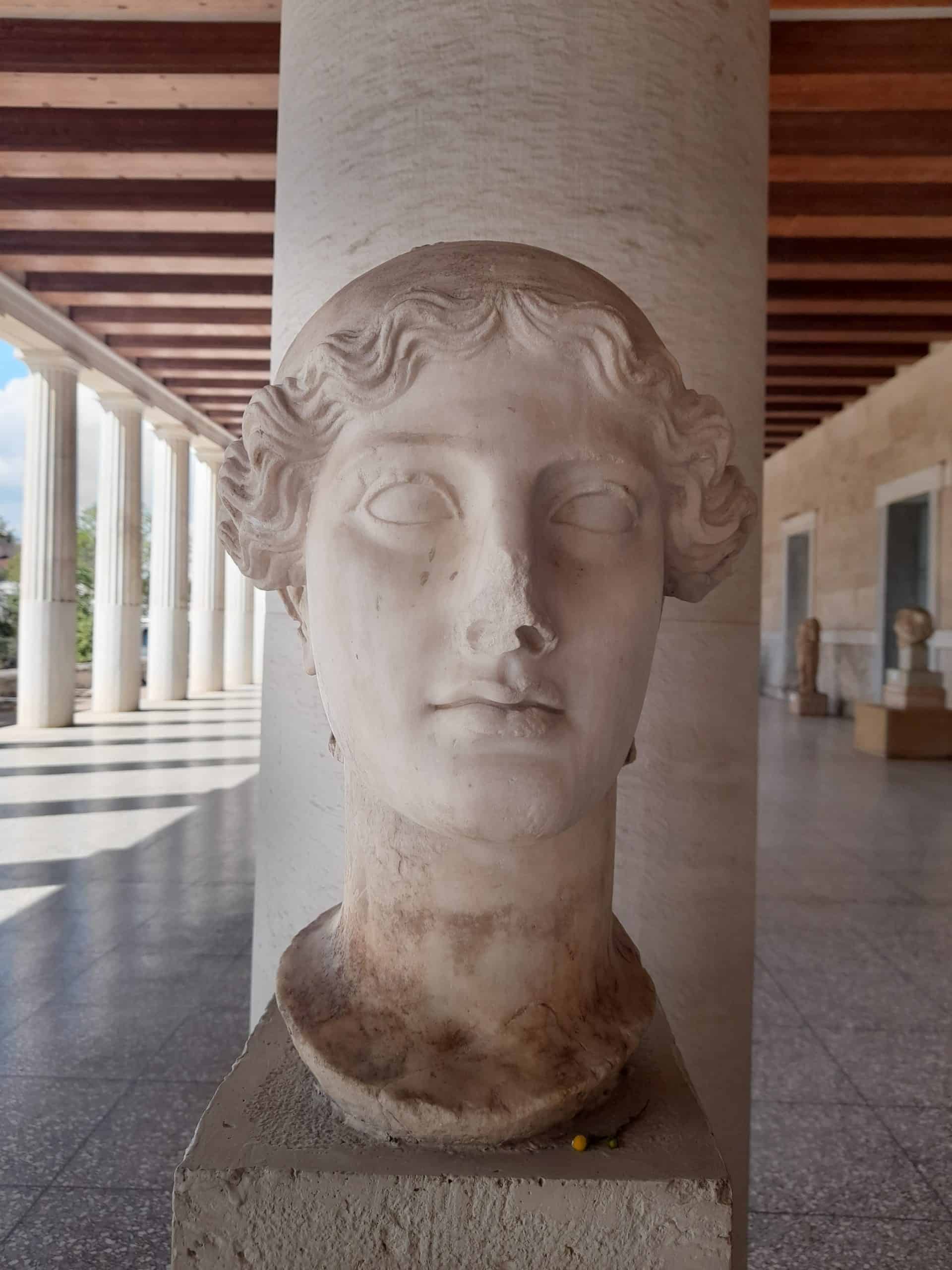
The very first ancient Greek civilisation was the Minoans who resided on the island of Crete. After the Minoans came the Mycenaean civilisation of mainland Greece.
They were most famously known for their battle of Troy. Even if you know little about Greek history, you have probably heard of the battle of Troy. It has been made famous by numerous books and movies about Greece.
Greece entered a dark age in 1100BC, before re-emerging in 800BC. This period, known as the “Archaic” period, saw Greece play host to the world’s very first Olympic games.
The “Golden” age of Greece started around 480BC. This is when grand marble temples were constructed, democracy was founded, and the infamous Greek plays and tragedies soared in popularity.
The Romans took control over Greece (and much of Southern Europe) from 323 to 30 BC. This period was known as the “Hellenistic” period.
“Modern” Greek History
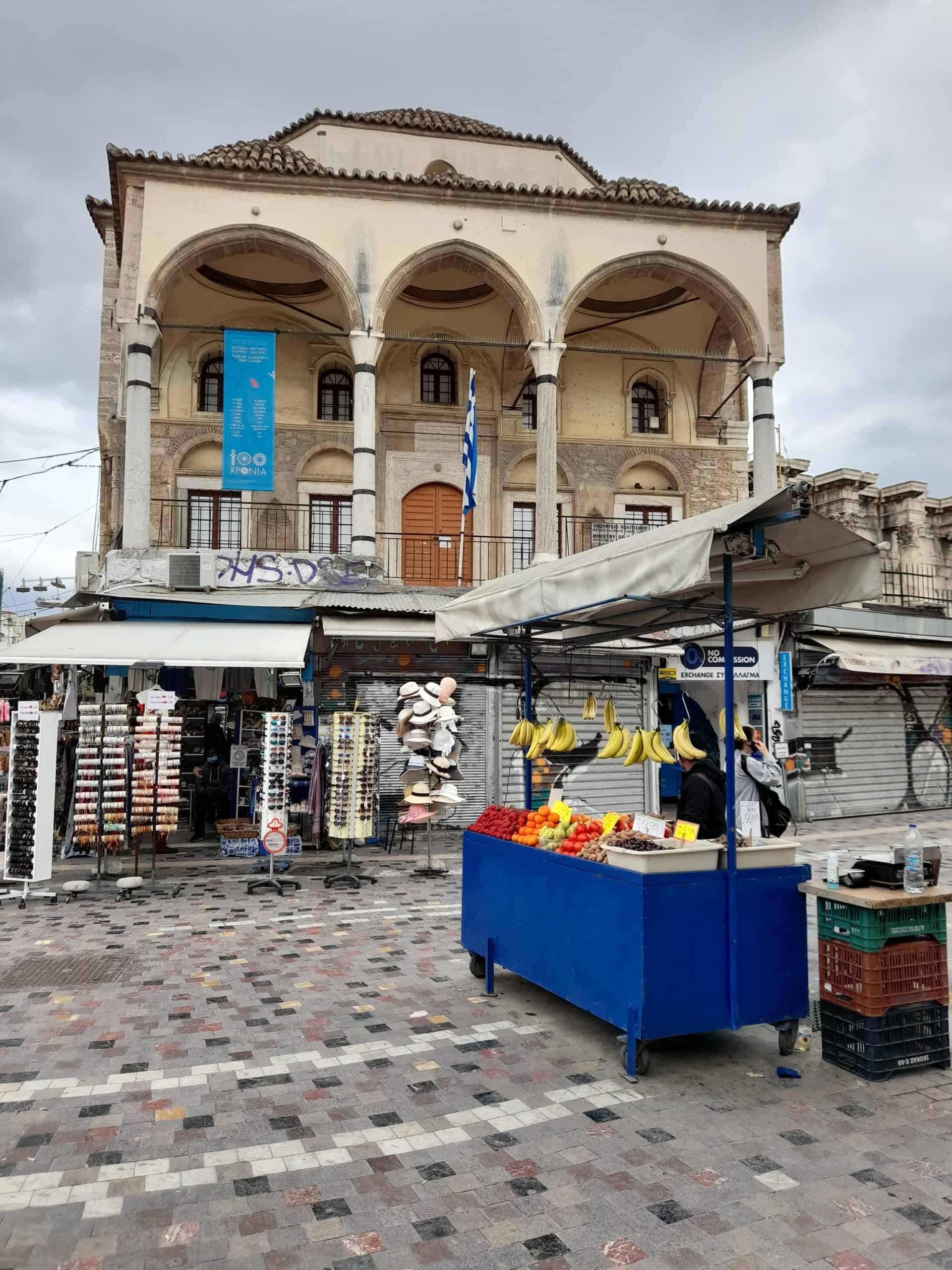
Ancient Greek history is fascinating but so too are the more modern events in Greece. For years, the Greeks struggled under the control of the Ottoman Turks.
Indeed, the Greeks did not gain their independence until 1821. That’s only 200 years of “Greece” existing as we know it today.
The war of independence, the struggles under Turkish rule, and years of dictatorship have shaped Greece. This history is arguably just as fascinating as that of the Classical and Hellenistic periods of Greece.
Famous landmarks in Athens enable you to experience and learn about Greek history through the ages.
Athens Famous Landmarks
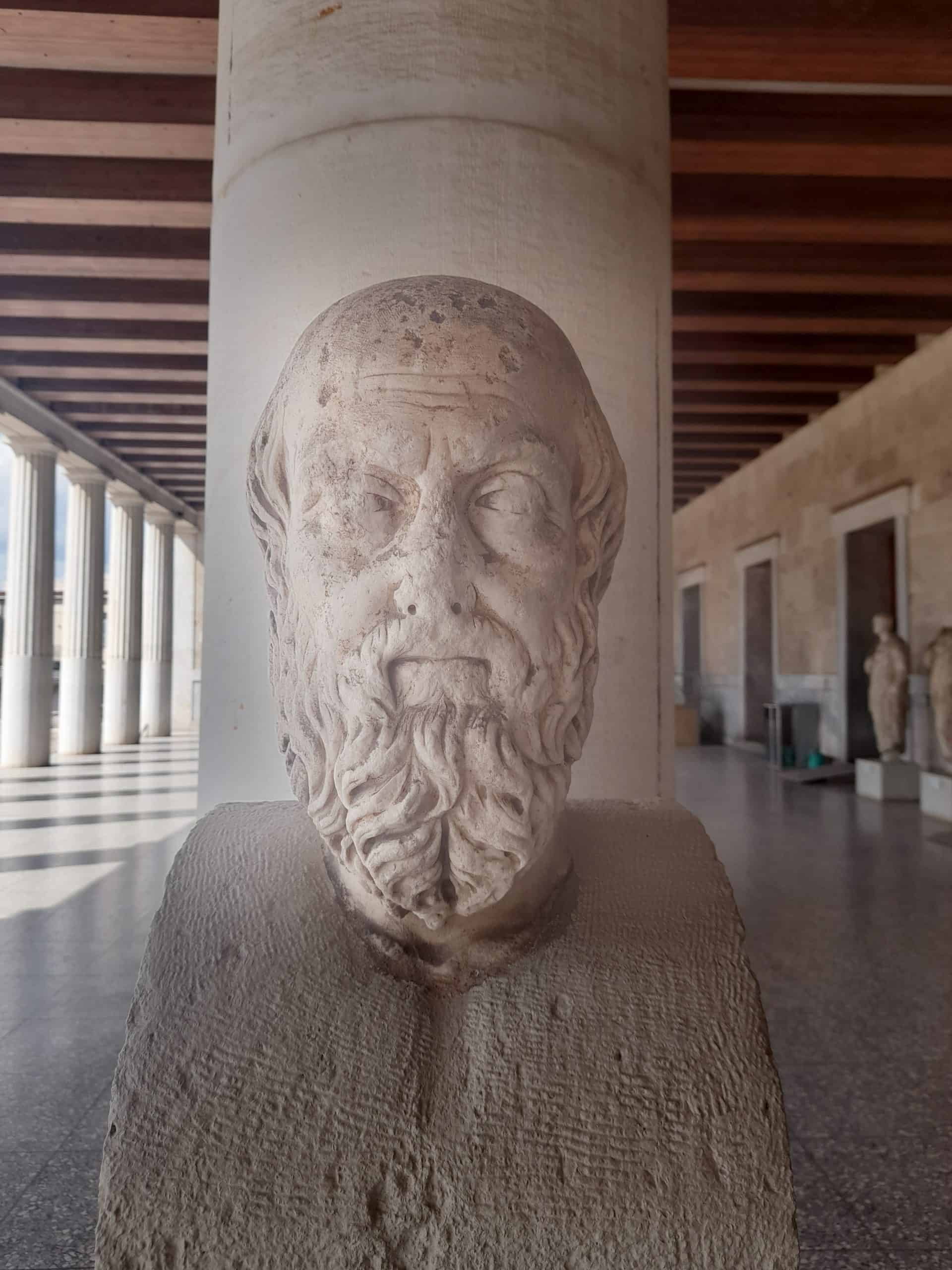
The famous landmarks in Athens detailed below help you to really scratch beneath the surface to understand the history of Athens, and why the city is as it is today. You should try to see as many as you can during your Athens itinerary.
Some deserve several hours of your time. Others can be simply admired from the roadside as you pass them.
Hadrian’s Library
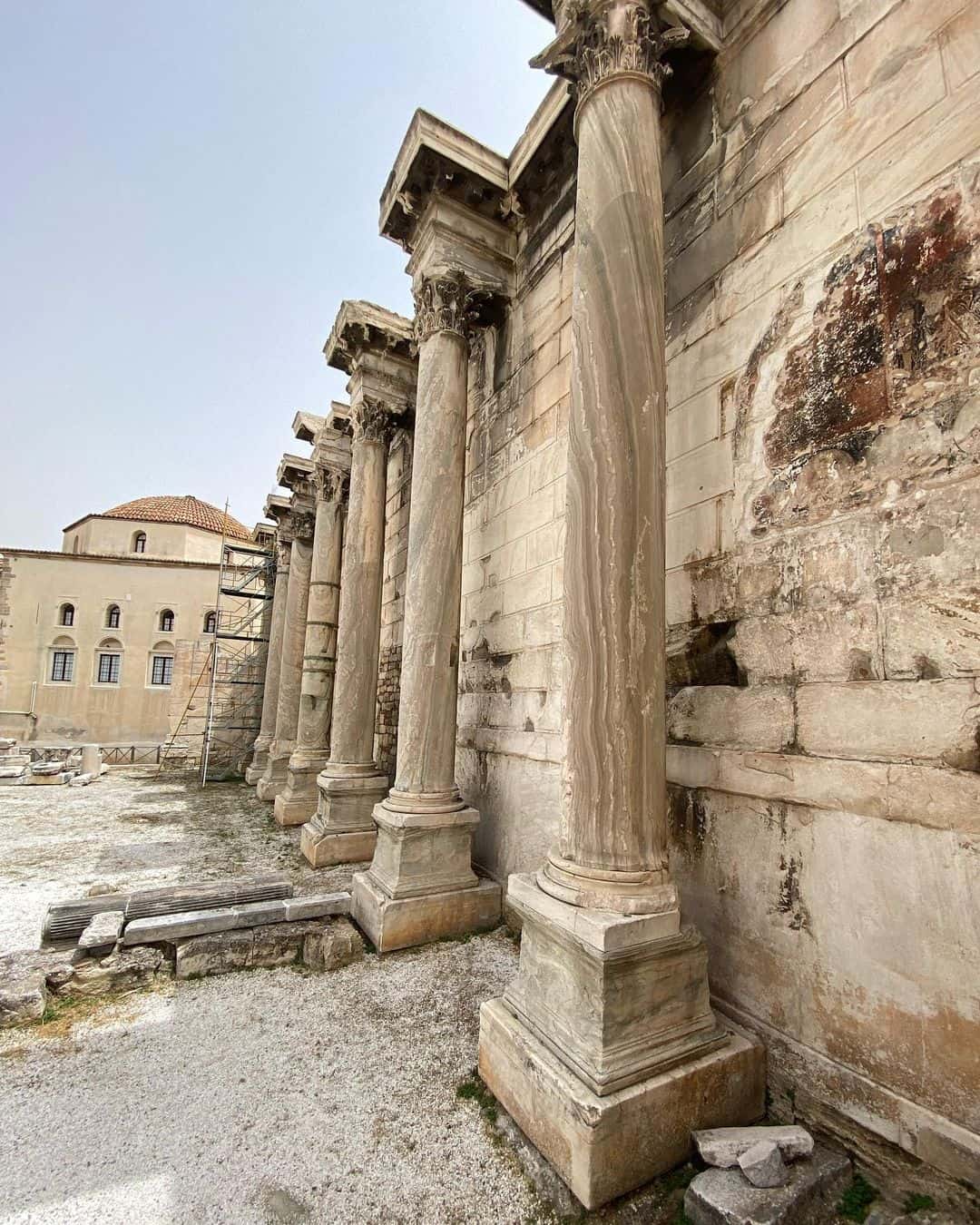
Hadrian’s Library is one of the most important historic sites in Athens. Its construction was ordered by the Roman Emperor Hadrian. He was a true Grecophile and arguably, one of the Greek capital’s biggest fans!
Even growing up in Italy before Hadrian set foot in Athens, he was given the nickname of “Graeculus” meaning “Little Greek”. He is responsible for the completion of several impressive architectural projects in Athens.
His library is a sprawling 10,000 square meter cultural complex that dates back to 132AD. It was more than ¨just¨ a regular library.
The site was made up of rooms where people could sit and listen to music, lecture halls, reading rooms, and rooms that contained some of the most important literature in Greece. Outside, there were beautiful gardens complete with ponds and flowerbeds.
Lycabettus Hill
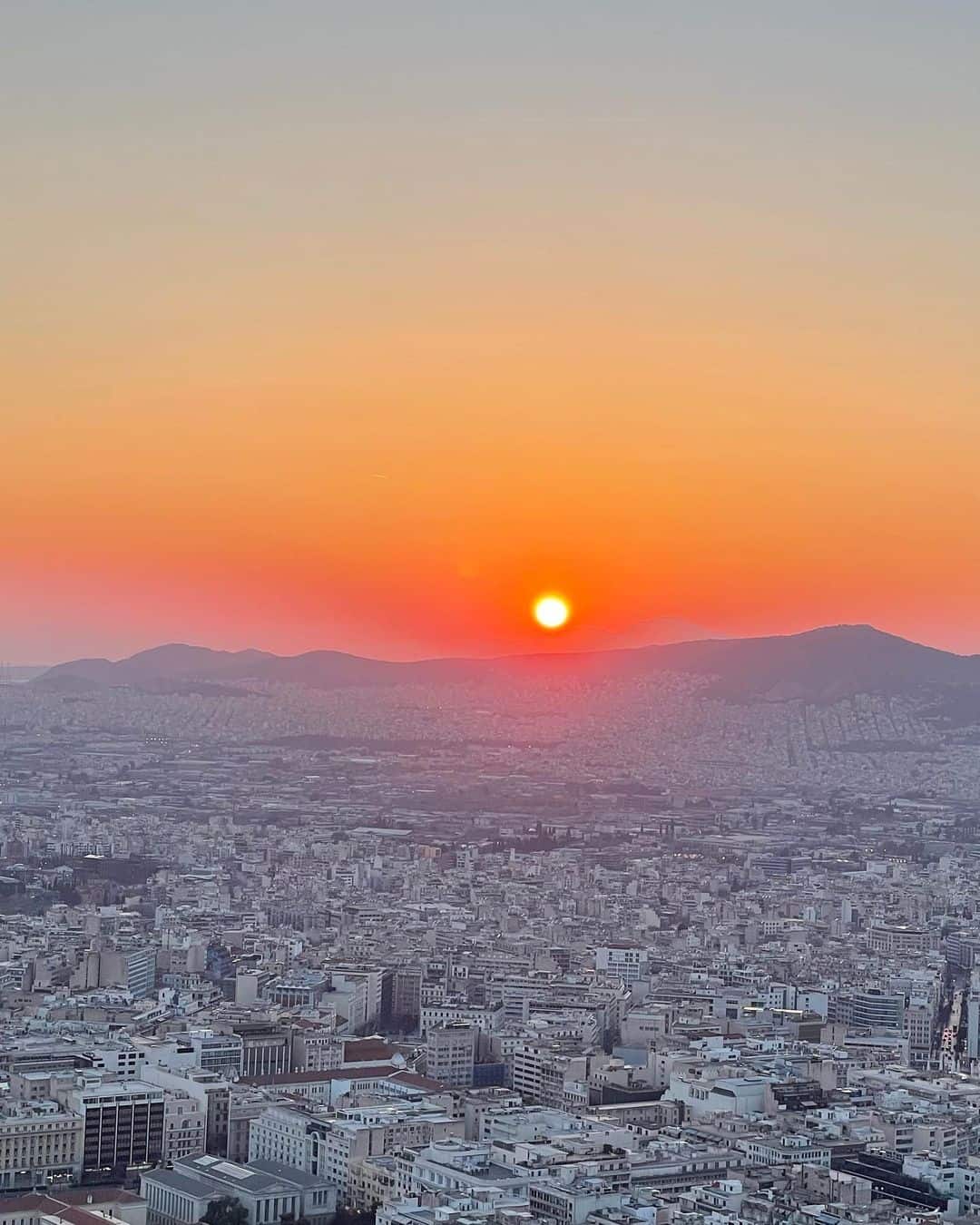
Lycabettus hill is one of eight main hills in central Athens. It offers a slice of respite and nature in the heart of a concrete jungle.
Several walking trails twist and turn through the slopes of Lycabettus. They lead you past fragrant flower gardens, dense woodlands, and cacti.
All of the paths here are very well-paved and suitable for people of all ages and fitness levels. As you ascend towards the top of the hill, you are rewarded with some of the best views of Athens.
The views are particularly special at Golden Hour and sunset when many landmarks of Athens are illuminated with hundreds of twinkling fairy lights. If you don’t feel like walking, you can also take the funicular train that runs from the foot of the hill in Kolonaki.
At the top of the hill is the quaint little whitewashed 19th-century church of Agios Georgios, and a huge flagpole sporting the Greek flag. You can go inside and admire the various Orthodox icons and frescoes. Donate a few cents to light a candle for loved ones lost.
Monastiraki Flea Market
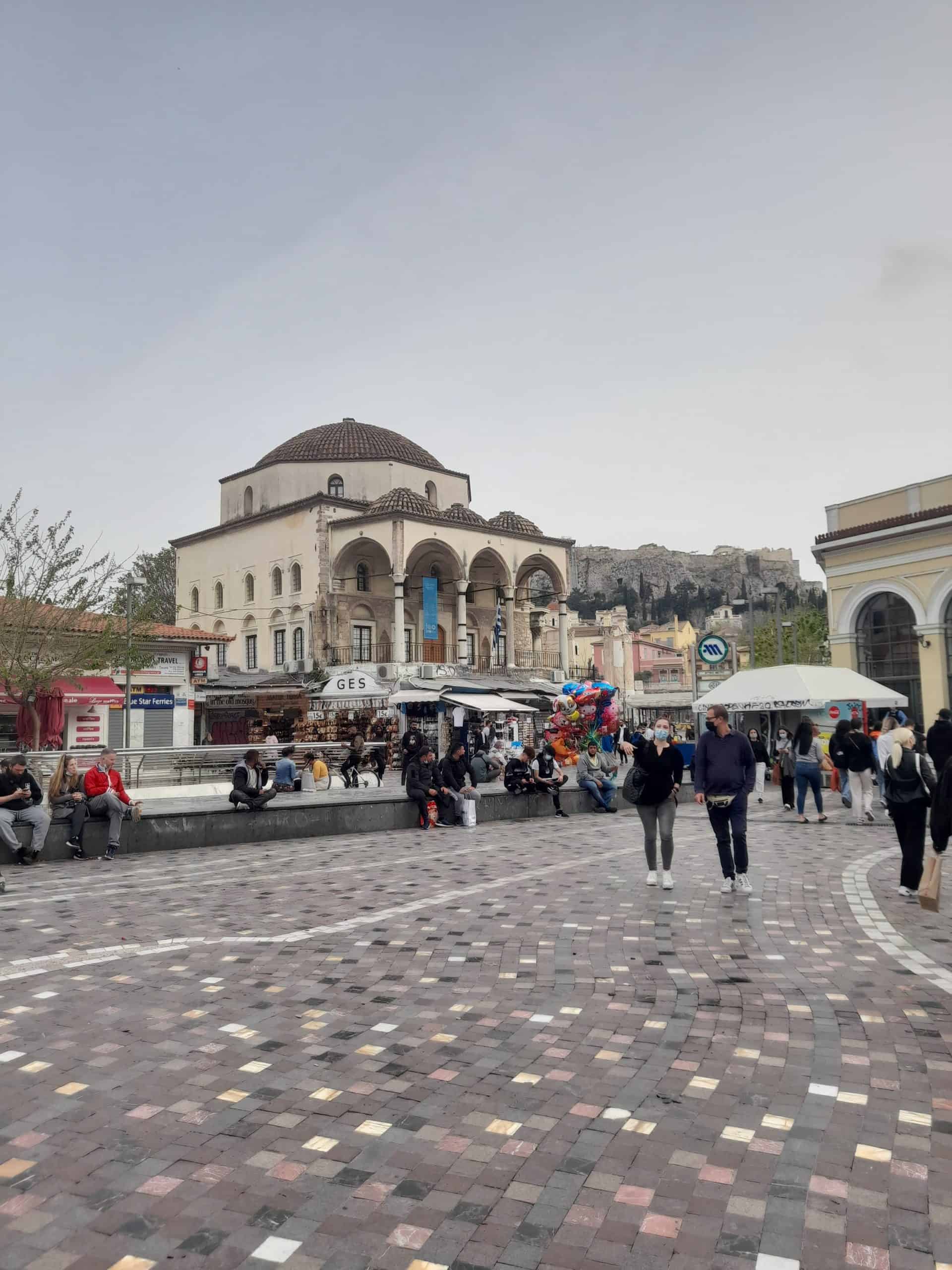
Monastiraki flea market is a great place to shop for souvenirs from your trip to Greece. All manner of weird and wonderful items can be found here.
Sure, some of it is tourist tat. But among the chaos, you can also find some really great items. For something quintessentially Greek, consider purchasing some evil eye pendants, or Karagiozis puppets.
The Roman Agora
The Ancient Agora of Athens was frequented by Greek Philosophers like Socrates and Aristotle. It was used predominantly for civil purposes and notable figures would often give speeches here.
Conversely, the Roman Agora was used as a marketplace. It sits beside Hadrian’s library just outside Monastiraki and old Plaka.
During the Roman occupation, people would come here to shop for for fruits, vegetables, meat, and any other grocery items that they needed. Indeed, ¨Agora¨ means marketplace in Ancient and Modern Greek.
The Roman Agora dates back to the first century AD. It was founded by no other than Roman Emperors Julius Ceasar and Emperor Augustus themselves.
The ¨New¨ Acropolis Museum
The ¨New¨ Acropolis Museum was built by Architect Bernard Tschumi and his associates in 2009. It is still referred to as the ¨new¨ Acropolis Museum, although it has existed here for more than 13 years now so it isn’t really all that new anymore.
This is one of the most important museums in Athens and since admission is included with a ticket to the Acropolis, it is absolutely worth visiting. The 226,000-square-foot museum is a masterpiece of contemporary architecture.
It sits just off the pedestrianised Dionysiou Areopagitou street, providing a stark contrast to the sunbleached, centuries-old buildings around it. On weekends, you will often see local Greek teens hanging out on it steps, and couples sitting here with a cup of Greek coffee.
The museum contains approximately 4,000 artifacts recovered from Acropolis Hill. Around 300 of these are considered as being major historic masterpieces.
The exhibitions inside date all the way back to the prehistoric era and run in chronological order. They also contain items dating back to the Archaic, Classical, Hellenistic, Roman, and Late Antiquity periods.
It is important to note that some of the marbles here are replicas as the originals are on display in the British Museum in London. This is a subject of ongoing discussion and much controversy.
The Pnyx
Athens is widely known as being the birthplace of democracy. The actual place where democratic discussions first took place is Pnyx hill, just beside Filopappou Hill.
As early as 507BC, notable Athenians would gather here to host assemblies. It is likely that between 6000 and 13,000 people could be seated here.
Today, very little remains of this ancient democratic site. There are just a few carvings and a few blocks of stone that were believed to have been used as a podium.
However, the views of the city from up here are second to none. Better yet, since few people are even aware of the Pnyx, the area is never overcrowded with tourists. From up here, the Acropolis is so close to the adjacent hill that it feels like you can reach out and touch it.
Areopagus Hill
Areopagus Hill is a rocky hill that sits to the right of the Acropolis exit on Theorias 21. It is also known as ¨the Hill of Ares¨.
In Ancient Greece, murder, treason, and corruption trials were heard here. The site is named after the Greek God Ares because, according to mythology, Ares was tried by the council of the gods here for the murder of Halirrhothios, son of Poseidon.
Like with the Pnyx, nothing remains here from the time of the Ancient Court of Athens. Areopagus Hill is extremely rocky and the surface is very uneven so you absolutely need to wear comfortable, supportive footwear if you want to come up here.
This is a great spot to watch the sunset and enjoy incredible views of the Acropolis and the Agora. There is a small park at the foot of the hill which is a popular rendezvous point for locals and dog-walkers.
Varvakios Agora
Varvakios Agora is the name of the main marketplace in Athens. It first opened its doors in 1886 and it has been one of the most popular places to shop for meat, fruit, fish, and vegetables ever since.
It is nestled in the heart of Athens’ eclectic Psiri neighbourhood. More than 3,000 – 5,000 people shop here every day.
Many Greeks prefer to buy their produce from independent producers and farmers as opposed to supermarkets. Not only are the prices more economical, but the quality is usually better too.
Stavros Niarchos Cultural Centre
The Stavros Niarchos Cultural Centre is one of the most impressive examples of contemporary architecture in Athens. It is located in Kallithea, a western Athenian suburb some 4km away from the city centre.
Italian Architect Renzo Piano designed the centre. It was completed and opened to the public in 2006. Piano is also known for creating some of the best contemporary structures in Europe, including the Shard in London and the Centre Georges Pompidou in Paris.
The project cost a whopping $861 billion dollars. The new Greek National Opera and National Library of Greece are housed within this spectacular glass building.
If you are spending an extended amount of time in Athens, it is certainly worth stopping by here. There is a beautiful park that runs outside past the park with a man-made stream. During the summer months in Greece, live musicians often perform here.
There is a small cafe in the middle of the stream that serves an array of light bites, Greek desserts, and coffees. On the top floor of the centre, you can enjoy a great, alternative view of Athens that few tourists know about.
Ermou Street
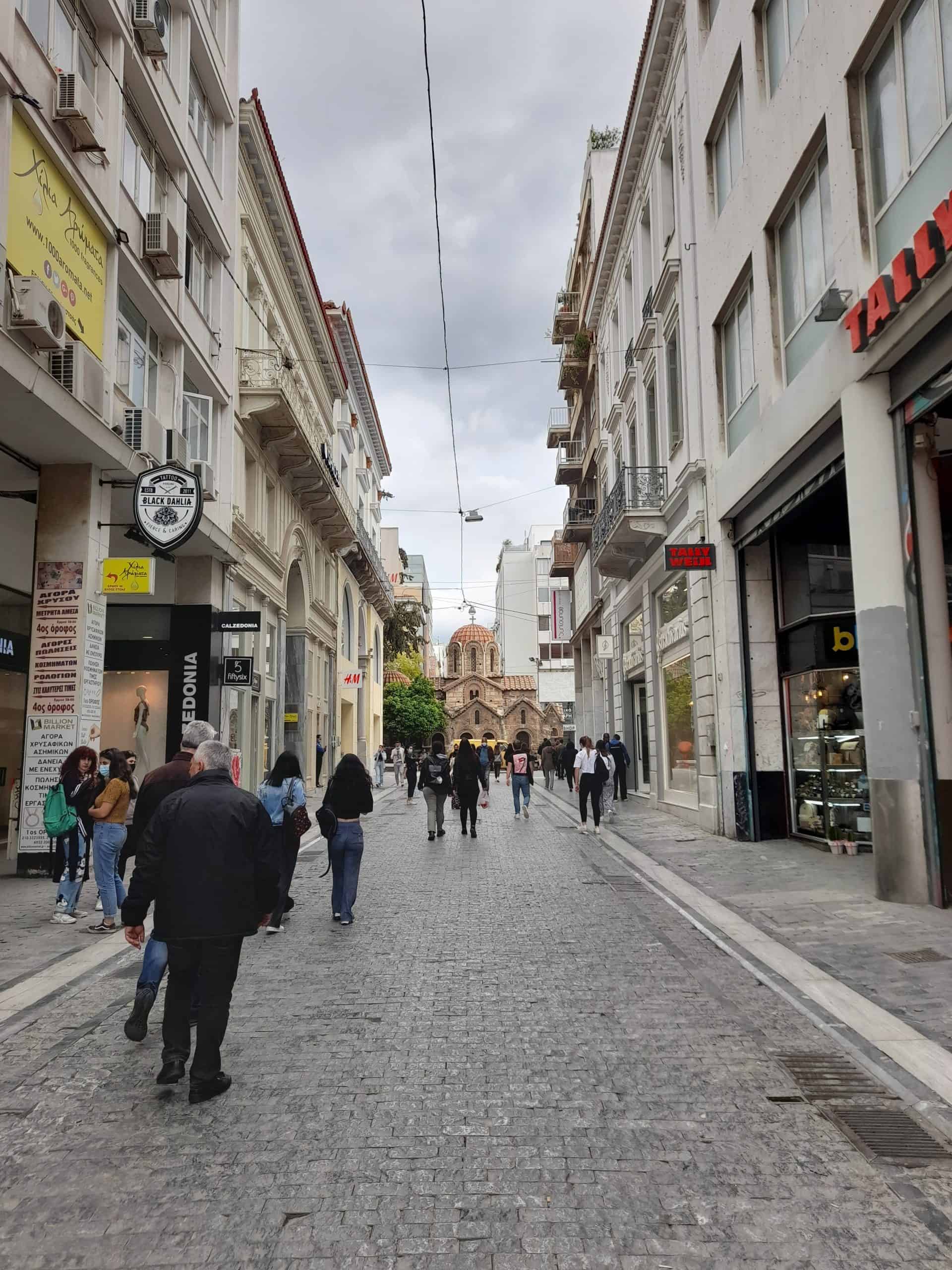
Ermou street is one of the main places to go shopping in Athens. This street is to Athens what Oxford Street is to London.
Ermou connects Syntagma Square with Thissio via Monastiraki. From Syntagma, step onto the street to the left of the McDonalds. That is Ermou.
Ermou has been a retail hub of Athens for as long as the city has been the Greek capital. Back in 1834, it was little more than a dirt trail.
As Athens grew and developed, Ermou was built to offer shopping opportunities to the Athenian elite. Today, you will find many international high street stores here such as H&M, Zara, Massimo Dutti, Sephora, etc.
There are also a lot of Greek independent stores scattered along Ermou and on the little alleyways that veer off from it. Ermou is one of the key landmarks of Athens and one of the main things people envisage when someone mentions Athens city centre.
Plateia Varnava
Each Athenian neighbourhood is like a little town in itself. Most are centered around a square known as a ¨plateia¨.
These are usually encompassed by bars, restaurants, tavernas, and stores. In the central district of Pagrati, one of the best places to be on a Friday and Saturday night is Plateia Varnava.
There are some great Athens nightlife spots here – including the retro-themed Superfly cafe (Empedokleous 28). Varnava is pretty well known across Athens because, at weekends, so many Athenians just buy cans of beer or other beverages and just hang out outside with their friends.
National Gardens of Athens
The National Gardens of Athens are the Greek capital’s answer to Central Park. They are just across the road from Syntagma, and there are entrances from Vassilissis Sofias Avenue, Amalias Avenue, and the Zappeion.
The gardens were created in the 19th century on the order of Queen Amalia, the first Queen of Greece. This is a pleasant place to stroll through to get from the center to the Temple of Olympian Zeus and Kallimarmaro.
First Cemetery of Athens
The First Cemetry of Athens is arguably one of the more morbid landmarks of Athens, but there is a good reason why it is featured on this list. The cemetery opened in 1837 and was quickly established as a final resting place for prominent Greeks and foreigners.
Many notable Politicians, Authors, and Celebrities are buried here. Ernst Ziller, Adamantios Korais and Giorgos Seferis are just a few that rest here.
Some of the tombs and mausoleums are so ornately designed that they are like works of art in themselves. You may want to consider passing through to admire the detailed statues or pay your respects at the tomb of a favourite celebrity if you are headed towards the Mets area.
The 12th Century Church of Agios Eleftherios
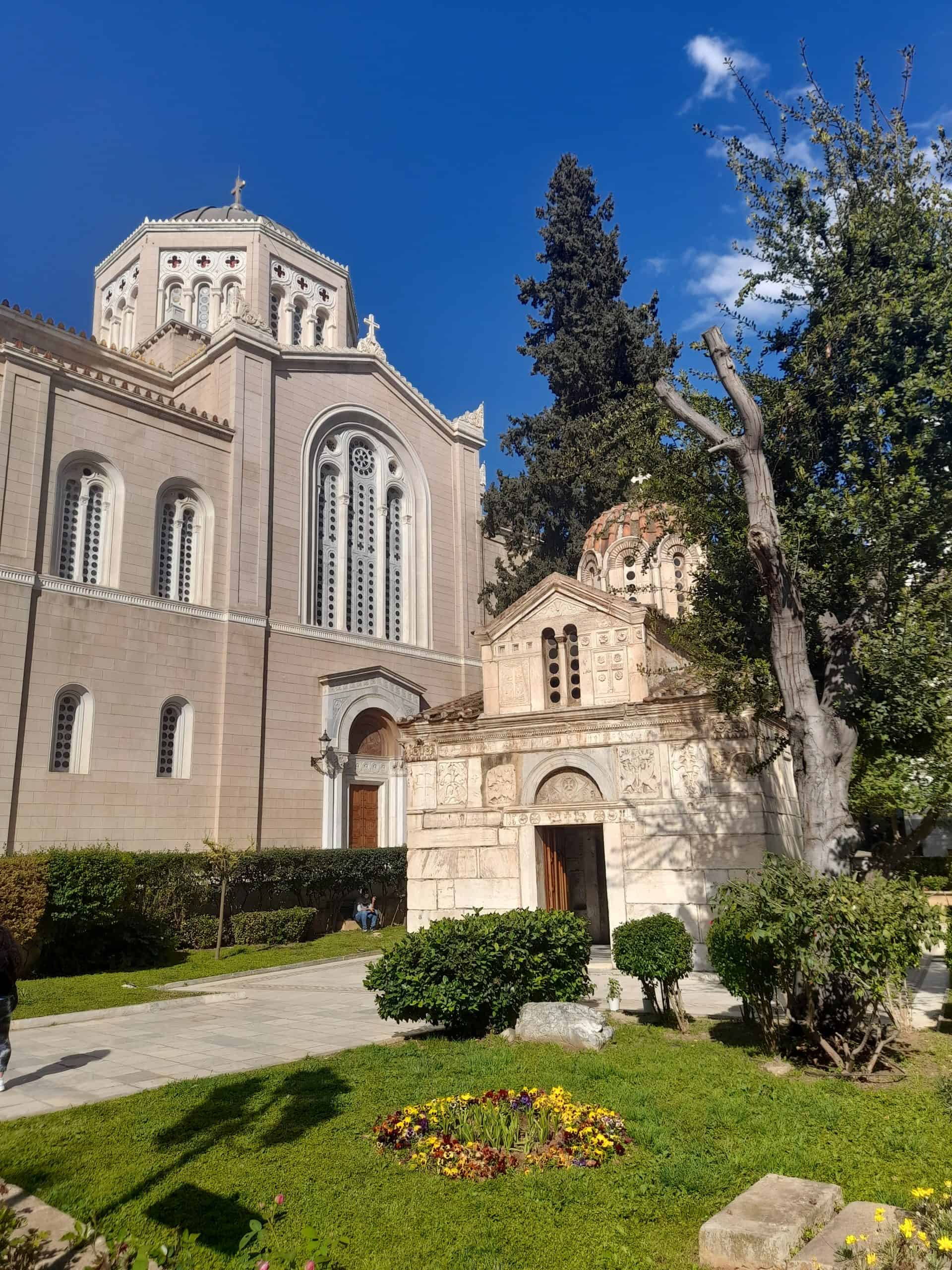
The 12th-century church of Agios Eleftherios is a little church dedicated to both Agios Eleftherios and Panagia Gorgoepikoos. It sits directly beside the towering Cathedral Church of Athens which makes it look tiny in comparison.
But what Agios Eleftherios lacks in size, it more than makes up for in charm. Little is known about the history or the prior use of the 12th-century church.
It has been completed in Byzantine style and the carvings and friezes that decorate its exterior are a mishmash of Christian and Pagan symbols. Some depict the zodiac, and various animals and mythical creatures.
The Stoa of Attalos
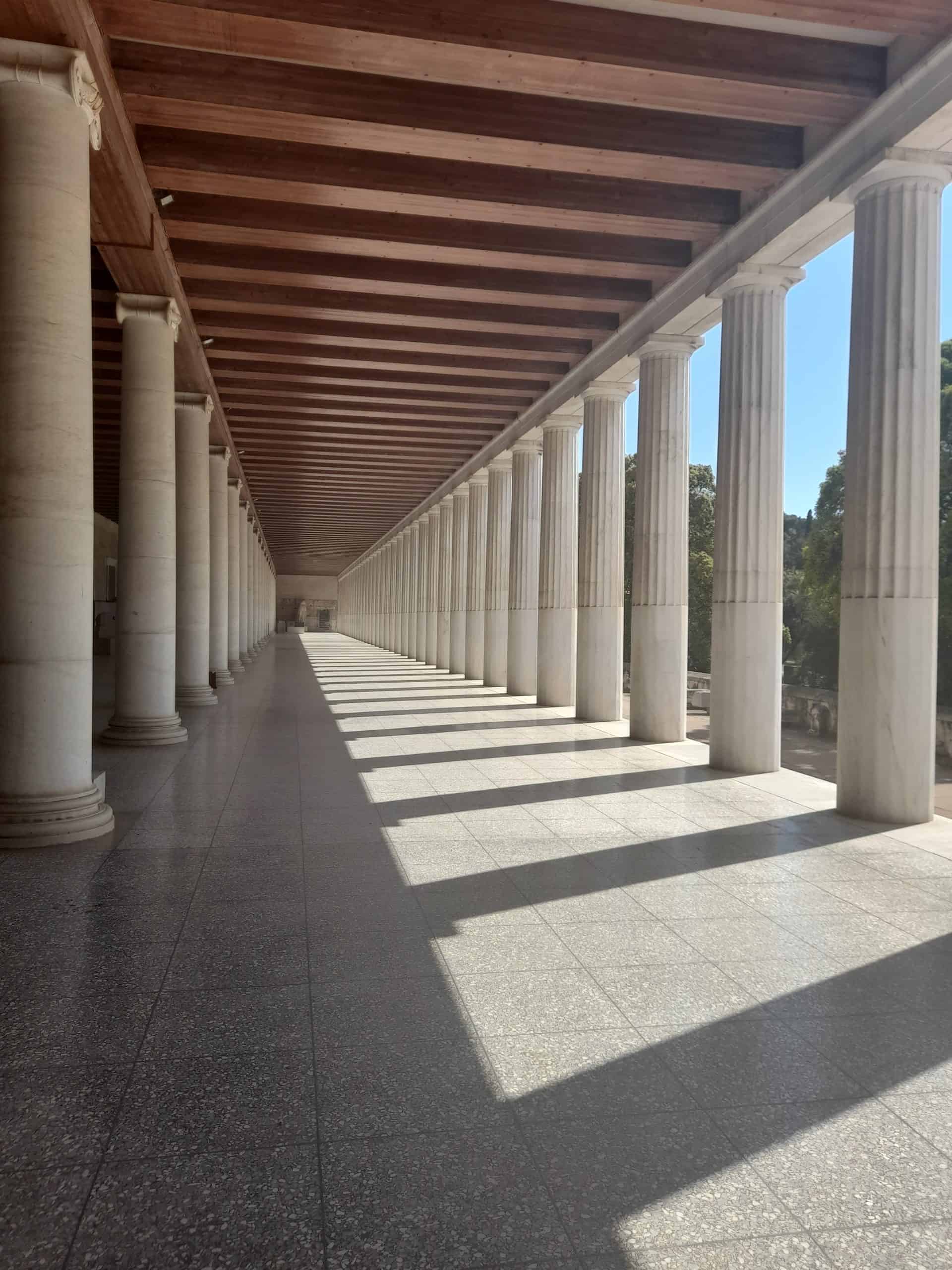
The Stoa of Attalos is a grand, colonnaded building that sits within the confines of the Ancient Agora site in Thissio. Today, the building functions as a museum. It contains an array of sculptures, busts, and interesting artifacts that were excavated from the area surrounding the Ancient Agora.
The building as it stands today was built in the 1950s following the destruction of the original. However, the original Stoa site was constructed here in 150 B.C. It was built by King Attalos II Philadelphus of Pergamon as a gift to the Athenians.
Despite being reconstructed, the Stoa is impressive nonetheless. Those involved in the rebuild used as much of the former structure as possible. Experts found the marble and raw material to make the site into an exact replica of that which previously stood there.
The Temple of Hephaestus
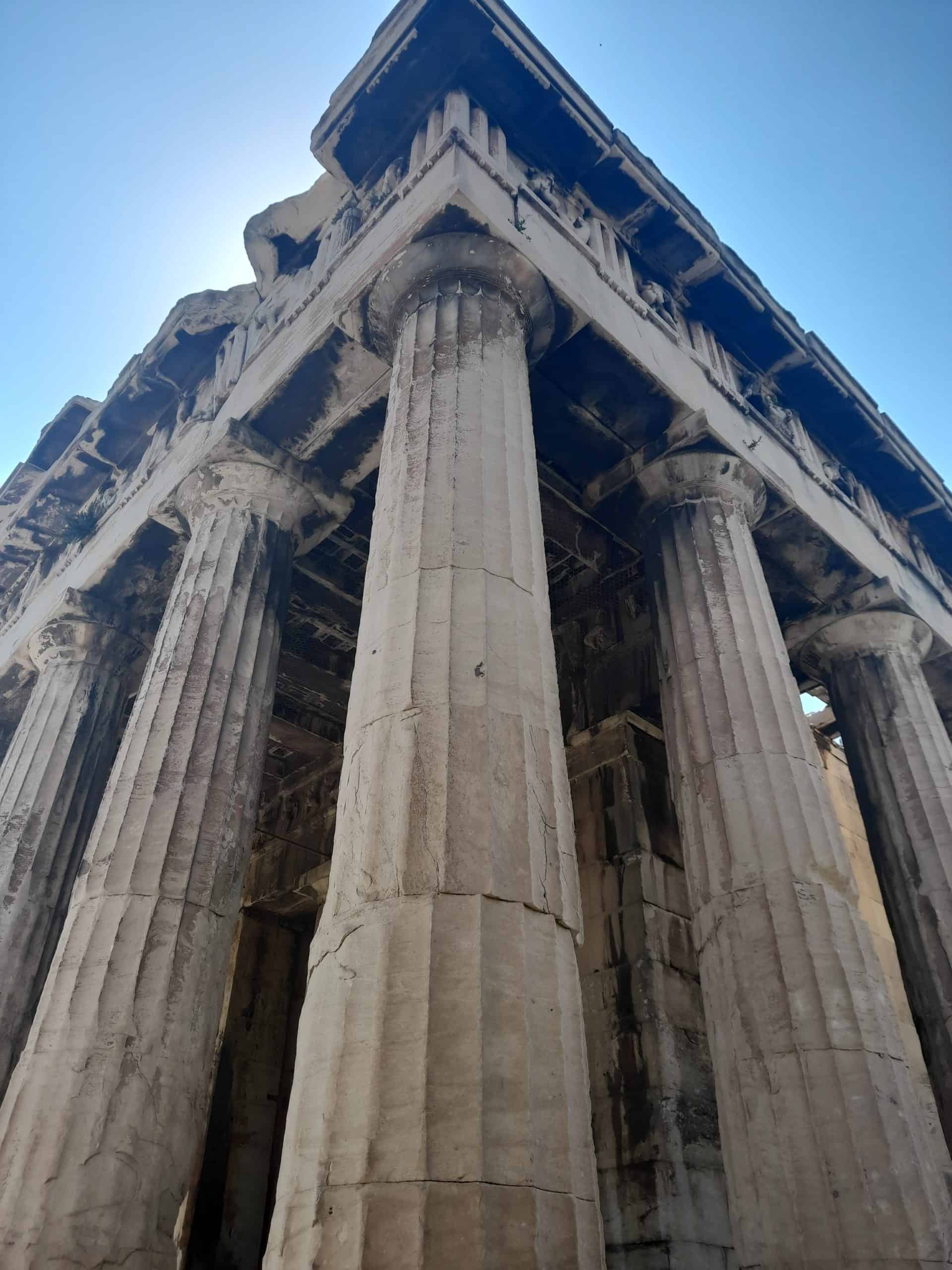
The Athens Parthenon may steal all of the glory as the most renowned Athens temple. However, the nearby Temple of Hephaestus was built at the same time as its more famous relative and is equally spectacular.
This is the best-preserved Dorian temple that exists in the Greek world. It was constructed in 450BC, mostly from Pentelic marble, by an unknown architect.
The temple is dedicated to Hephaestus, patron of metal-workers, and Athena Ergane, Patroness of potters and crafts. From the 7th century up until 1834, the temple was repurposed and served as a Church of St George.
Today, the temple of Hephaestus is one of the most famous landmarks in Athens. Excavation work in the area is still ongoing. Who knows what other secrets and treasures lie beneath the surface?
Filopappou Hill
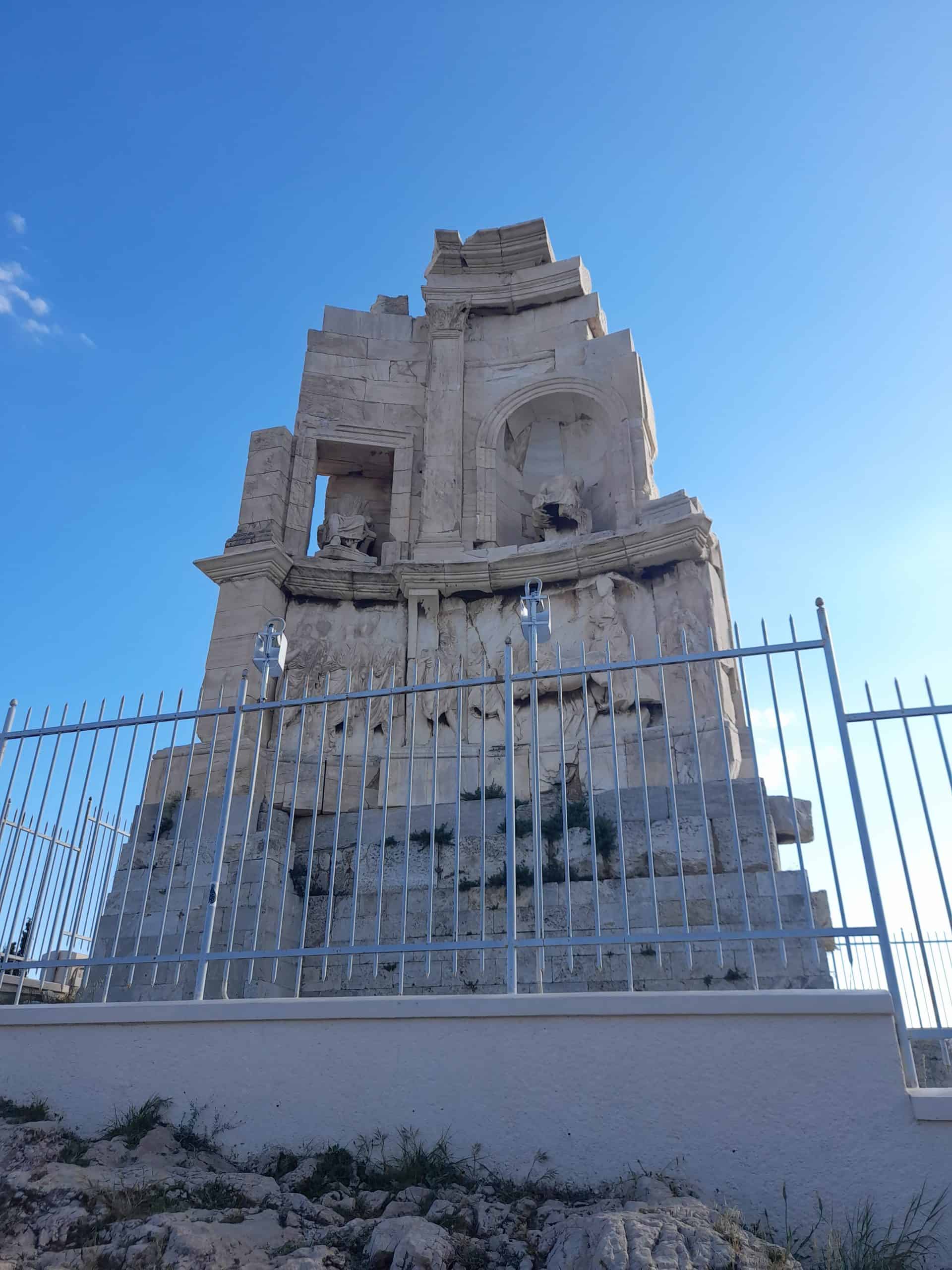
Filopappou Hill, or the “Hill of Muses” is the tallest of the hills of Athens. (The others being Lycabettus, Acropolis Hill, and Areopagus).
An ancient monument awaits at the top. This was built between 114 and 116 AD in honour of Julius Antiochus Filopappos, an important Roman Consul.
Sadly, the elements and vandalism have seen the structure deteriorate over the centuries and many of the statues are without heads! Regardless, it is worth following the uphill path from Dionysiou Areopagitou to Filopappou Hill. This is not least for the magnificent panoramas of Athens from this point.
On a clear day, you can see all the way to Piraeus from up here. The ascent to the top is neither difficult nor challenging.
It bypasses several other interesting sites. For instance, the quaint wooden church of Agios Dimitrios Loumbardiaris, Socrates prison, and the hills of Pnyx and Nymphs.
Socrates Prison
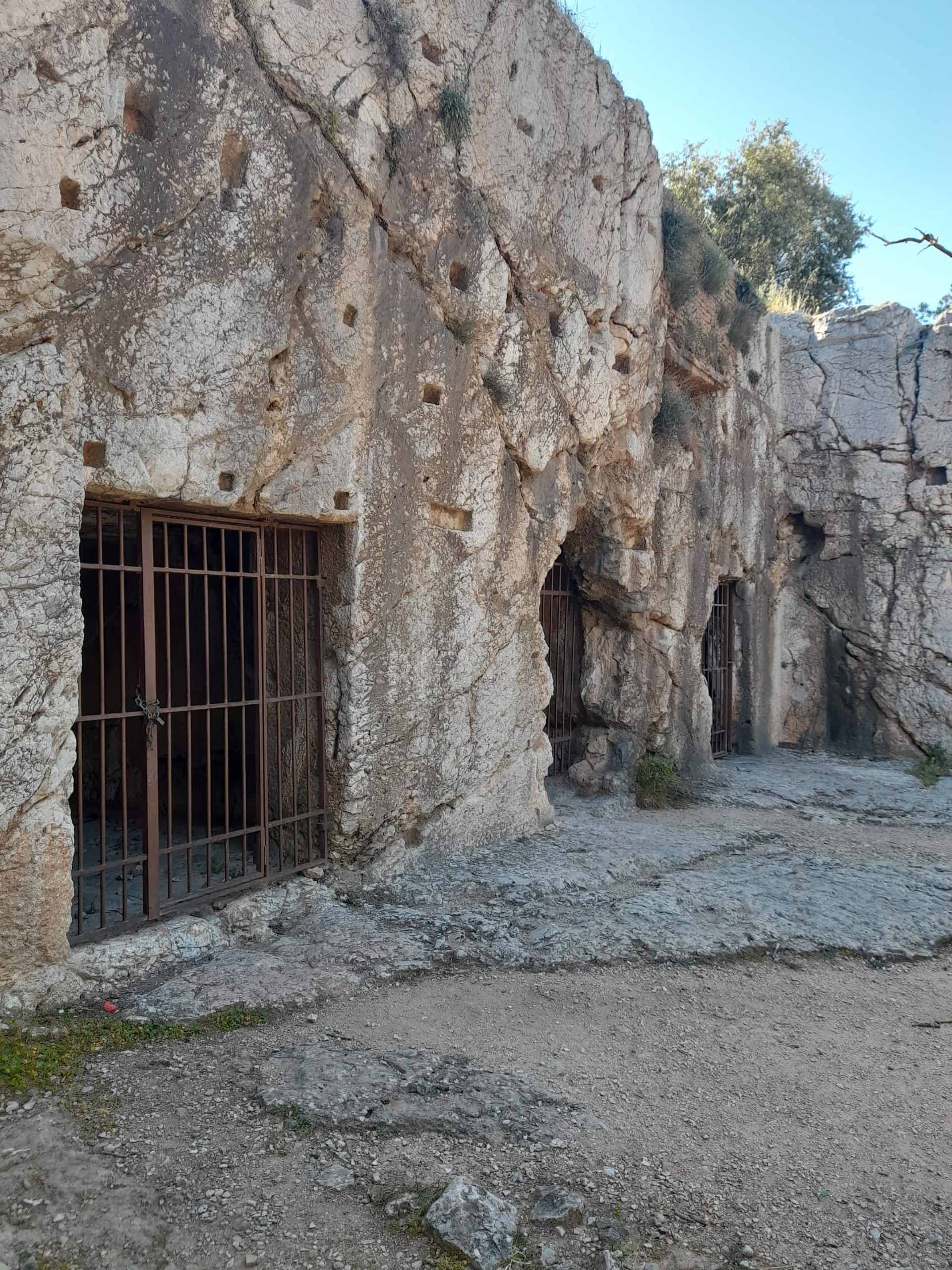
Socrates prison is a mysterious little cave complex carved into the rocks of Filopappou hill. For a period, it was believed that this was where the infamous Greek Philosopher was imprisoned and then executed. However, time has revealed that that is not the case.
Regardless, the site is interesting nonetheless. During World War II, the caves here were used to hide important artifacts from the Acropolis from the invading Germans.
Three rooms have been carefully carved into the rock face using skilled masonry techniques and wooden beams. Nobody is yet sure of the original purpose of this site. It was perhaps a bathhouse, storage, or a tomb.
Zappeion
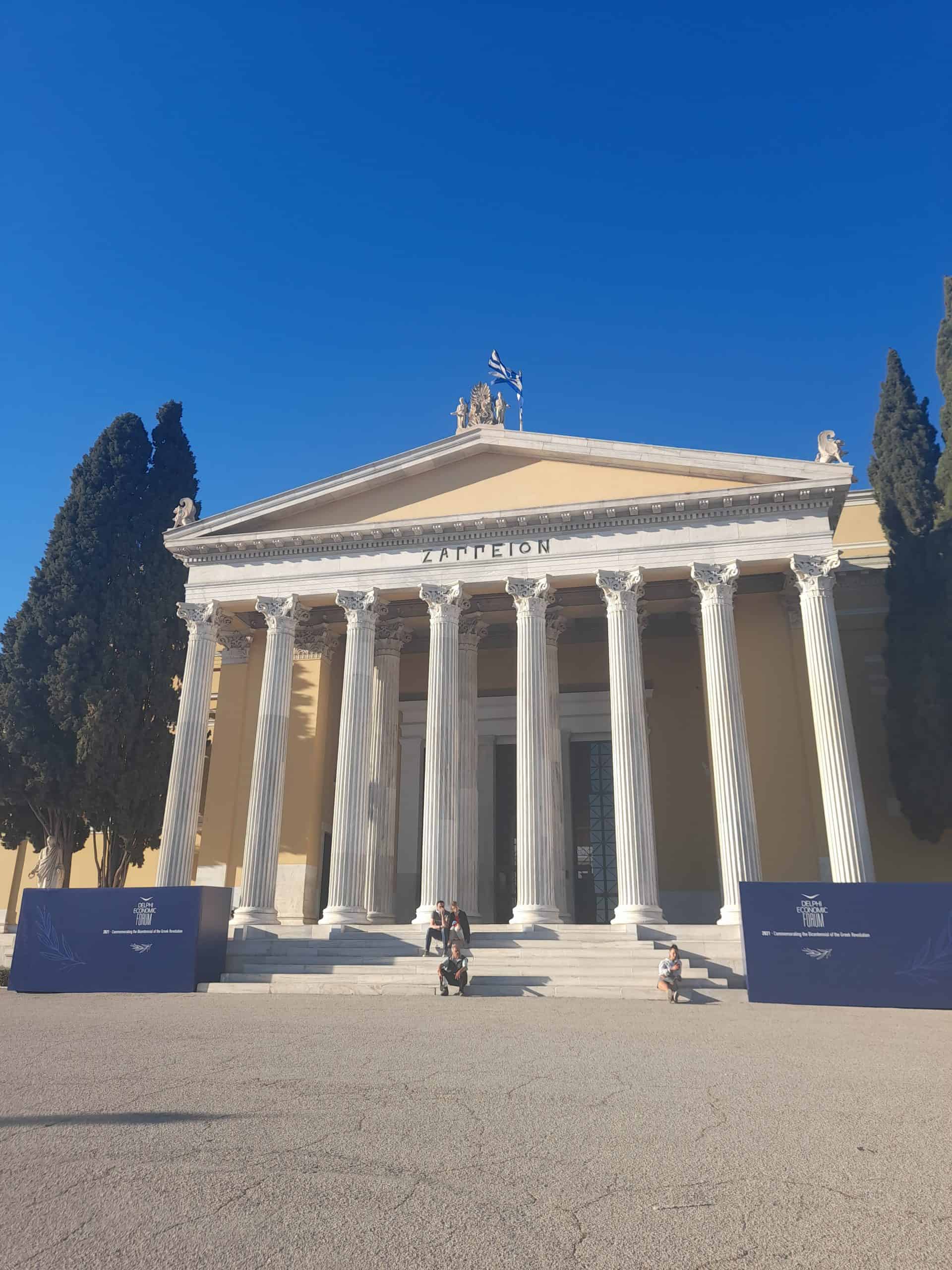
The Zappeion is a beautiful pale yellow mansion that awaits within the National Gardens on the outskirts of town. It was designed in the 19th century by architect T. Hansen.
Today, the Zappeion is an important meeting point for political and cultural events. It is encompassed by stunning gardens and floral arrangements. A scenic water fountain can be found in front of it and is a popular place for young Athenians to meet, and sit outside drinking coffee.
Tzistarakis Mosque

Tzistarakis Mosque is one of the lesser-known landmarks in Athens. However, it is one that you are sure to pass by during your time in the city. The mosque stands today, without its minaret, in the heart of Monastiraki square.
The structure dates back to 1759 when the Ottoman Turks ruled over Greece and Athens. There was much controversy in the mosque’s construction.
Marble from the ancient sites of Hadrian’s Library and the Temple of Olympian Zeus was used to build the site. This caused an uproar among Greeks for the desecration of their historic monuments, and concern among Turks.
Many people were convinced that a vengeful spirit would seek revenge on them for destroying the sites. When a plague broke out in Athens later that year, many believed it was due to the construction of the mosque.
Today, Tzistarakis Mosque contains a museum of ceramics. However, sadly it has been closed for several years, with no visibility provided on when it will open again.
Temple of Olympian Zeus
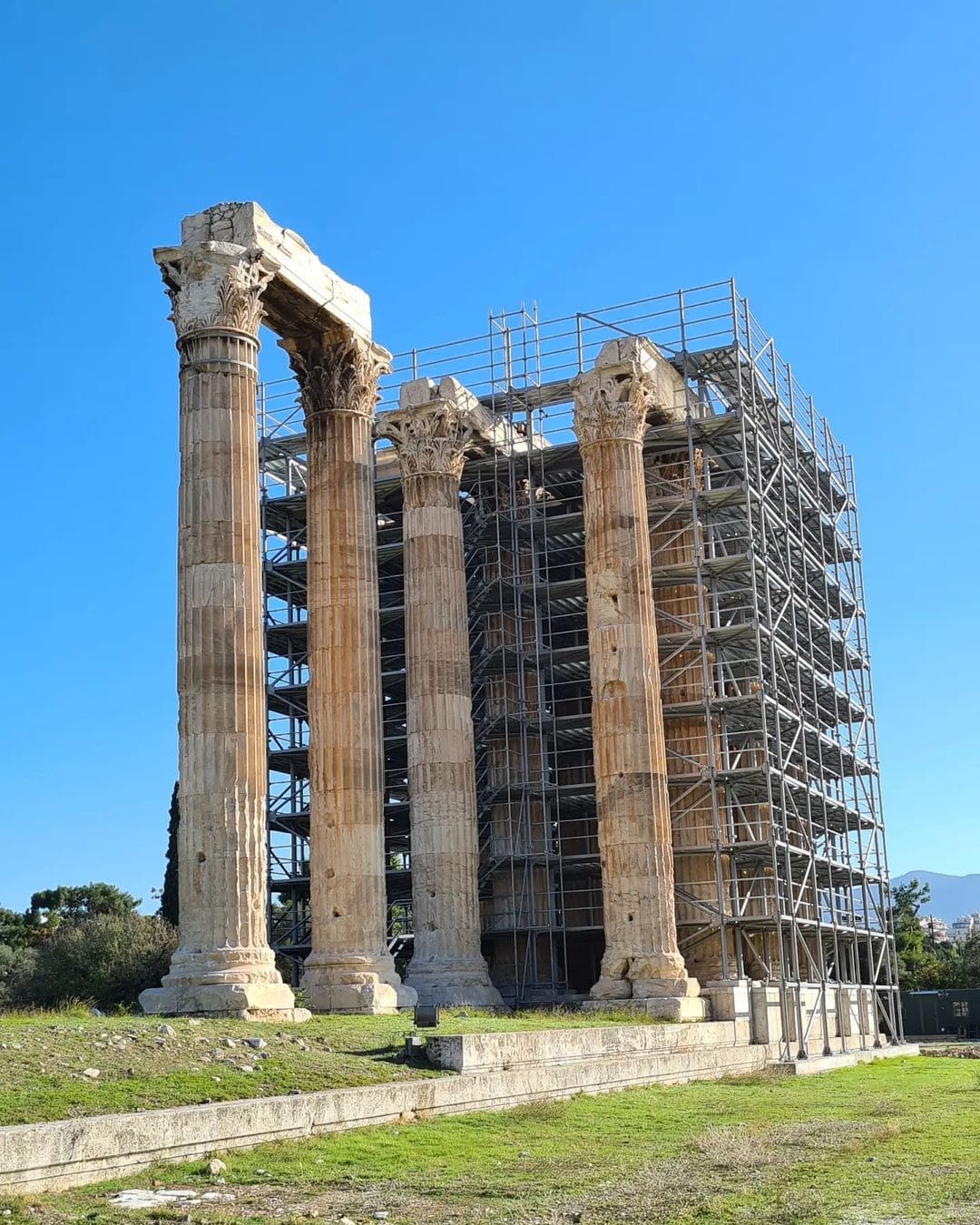
The Temple of Olympian Zeus sits just outside the centre of Athens city, close to the National Gardens and the peaceful “Mets” district. As the name suggests, it is dedicated to Zeus – Chief of the Olympian Gods.
In its finest hour, the temple boasted a phenomenal 104 columns. Today, only 21 remain.
They tower above you in all of their grandeur as you explore the grounds of the ruined site. It is easy to envisage how impressive this temple once was.
Initial construction on the temple began in the 6th century. The architects Antimachides, Antistates, Callaeschrus, Porinus were tasked with creating the largest temple in all of Greece, using only the finest limestone they could find.
Sadly, due to political disputes, construction was paused. It was resumed again in 174 BC by King Antiochus IV Epiphanes until he died and the project was again paused. Finally, the Roman Emperor Hadrian ordered its completion in 125BC.
Cathedral Church of Athens
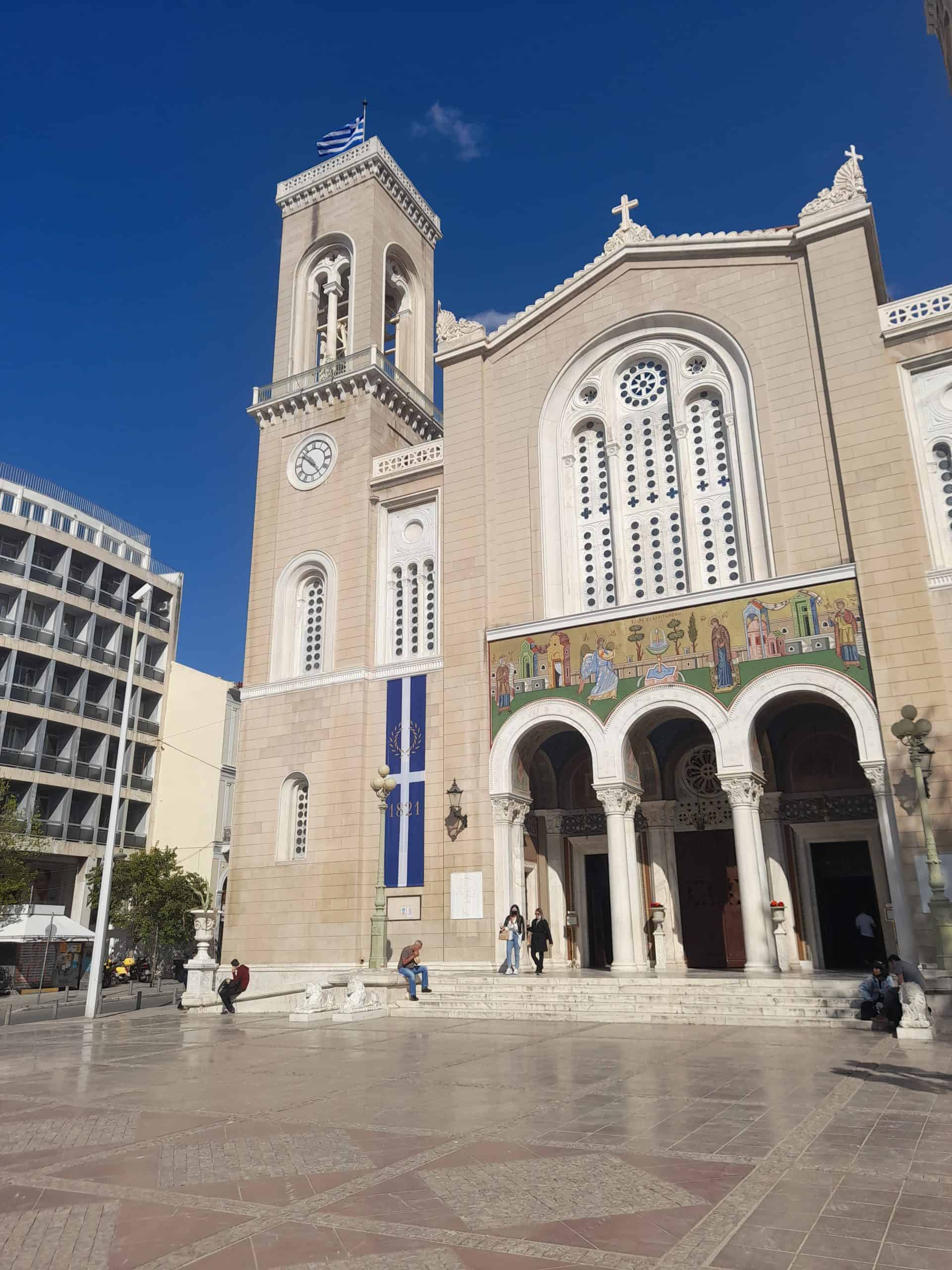
The Cathedral Church of Athens is one of the most important churches in Athens and in Greece, generally. It sits at the heart of Mitropoleos Square, close to Monastiraki.
This church dates back to 1842 and is presently the headquarters of the Archbishop of Greece. It is possible to enter the church and admire its vibrant frescoes, provided that a service isn’t taking place inside.
Mitropoleos Square is one of the many Athenian squares that act as a rendezvous point among locals. Historically, Ottoman commercial buildings stood here.
Today, coffee shops and offices encircle the square. Locals sit around the square sipping coffee, and young kids whizz through its centre on their skateboards, come day or night.
Hadrian’s Arch
Hadrian’s Arch is one of the most famous landmarks in Athens. It sits at the end of Dionysiou Areopagitou, beside the ruined Temple of Olympian Zeus.
The arch was built in 131-132 A.D. in honour of Roman Emperor Hadrian. It appears as a Roman triumphal arch and once acted as a gateway between the ancient city of Athens and a “new” city of Hadrian.
The Emperor had named the latter after himself. On the eastern side of the arch is an inscription that reads “This is the city of Hadrian and not of Theseus”.
The Panathenaic Stadium
A short walk through the National Gardens, past Zappeion brings you to the Panathenaic Stadium. Locally, this is affectionately referred to as “Kallimarmaro”.
Not only does the stadium hold the accolade of being the place where the very first Olympic games were hosted (1896), but it is also the only stadium in the world that has been made entirely out of marble.
For centuries, the stadium hosted events where nude male athletes would compete in track competitions (gymnikoi agone). The sprawling 50,000 seater site dates back to 330BC.
Musical performances are still hosted here occasionally today. Admission to the stadium also includes entrance to the on-site museum which contains an array of Olympic torches, posters, and memorabilia from around the world.
Syntagma Square
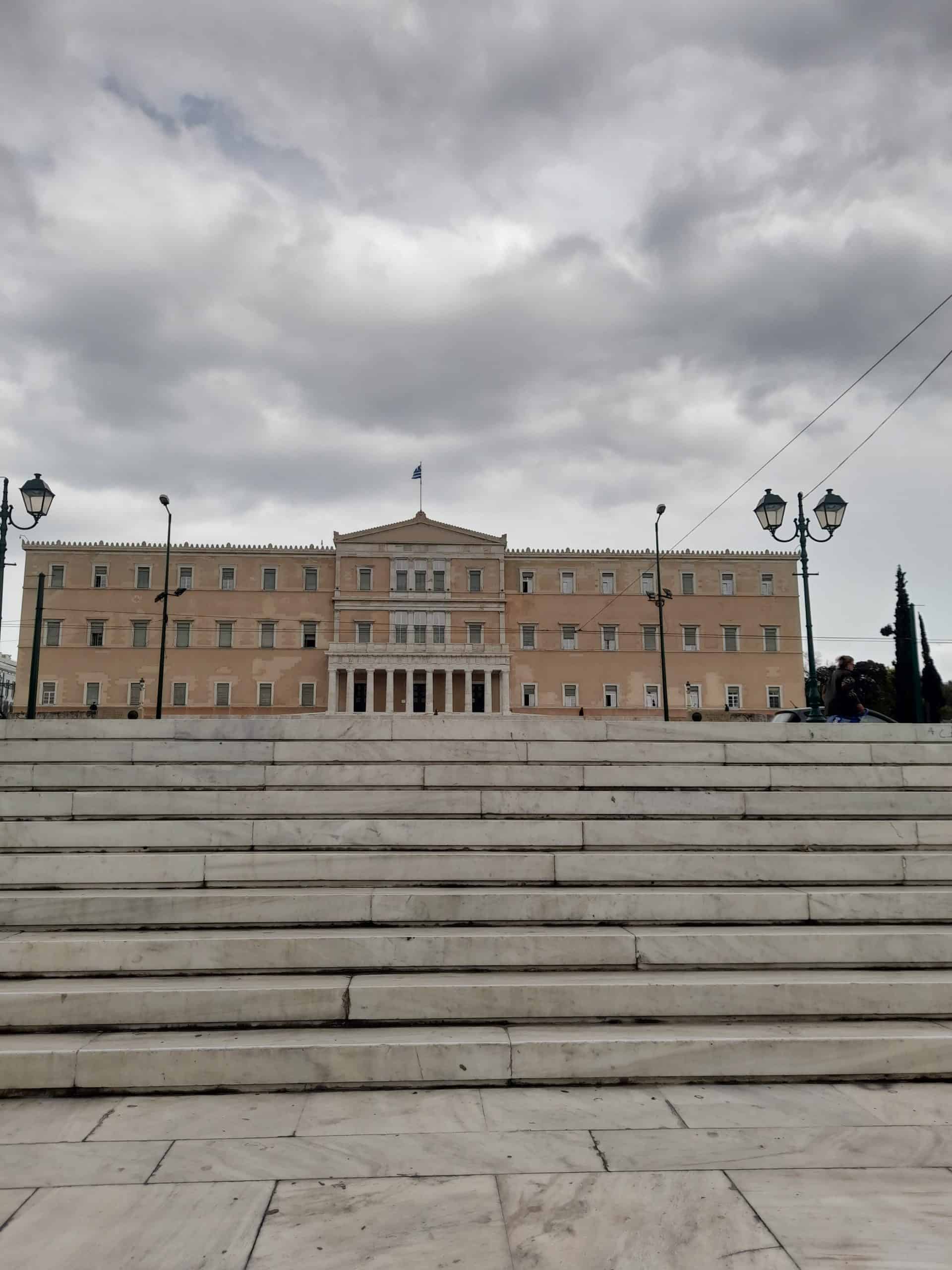
Syntagma is the main central square of Athens. The square is a popular rendezvous point among Athenians and acts as an excellent transport hub providing connections across the city.
Subway services to the Athens Riviera, metro lines and buses around the city, and connections to the airport can all be found here. Some of Athens’ most luxurious hotels are based here and provide an excellent jump-off point for exploring the city. Most notably, the exclusive Hotel Grande Bretagne and the Plaza hotel are located here.
The pale yellow building that sits directly opposite Syntagma Square at the top of the steps is the Greek Parliament building. Look out for the Evzones.
These are uniquely dressed factions of the Greek elite forces that guard the tomb of the unknown soldier. A changing of the guard’s ceremony takes place here every hour.
The Acropolis
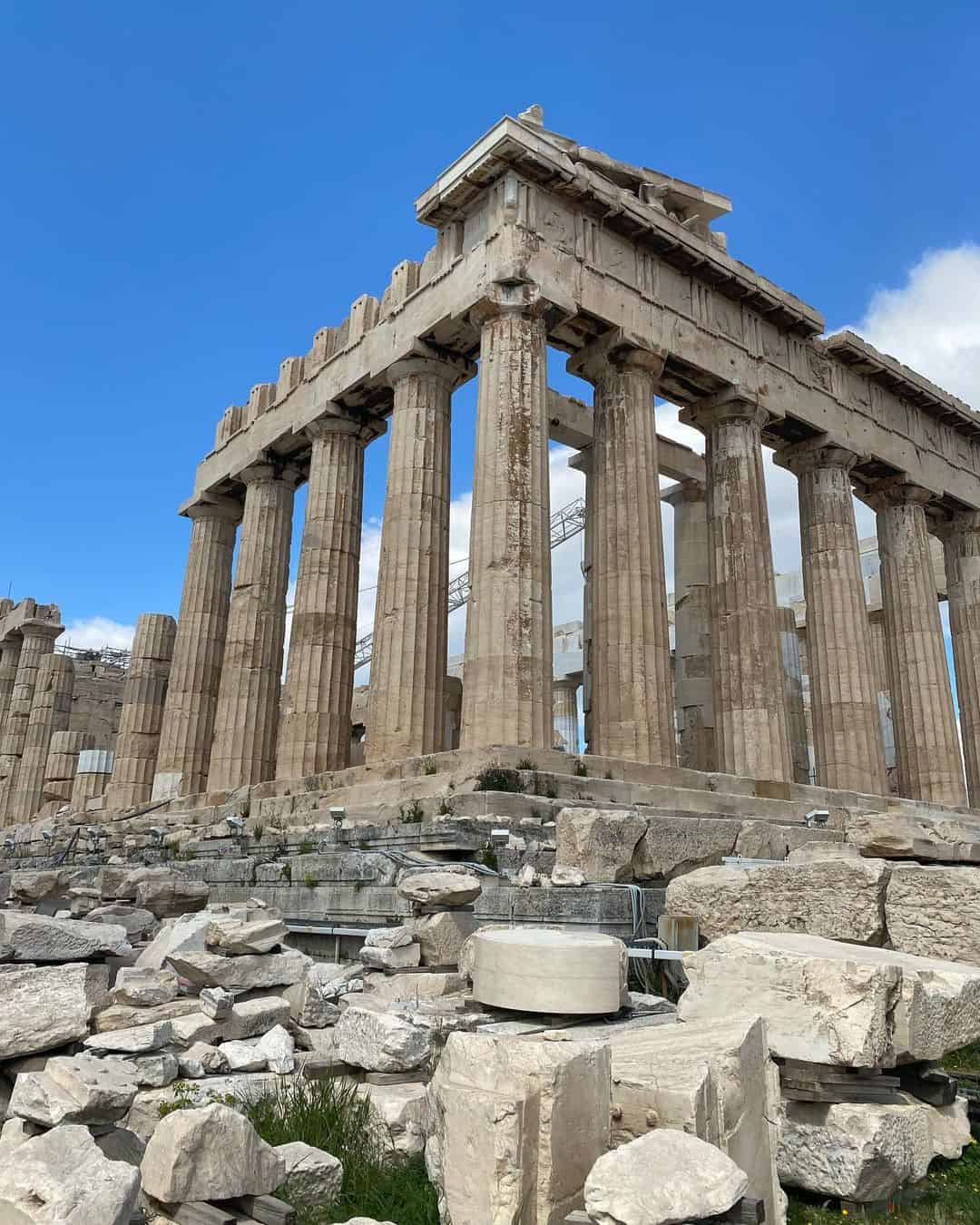
The Acropolis is undoubtedly Athens’ most famous site. At first glance, the Acropolis may seem like it simply consists of the Parthenon perched atop its craggy hilltop. But the site is actually very expansive.
Once upon a time, almost every Greek city had an Acropolis. The majority of these were built for defensive purposes. However, the purpose of the Athens Acropolis was mostly religious.
The Temple of Athena Nika, the Pandroseion, the Erechtheion, and the Temple of Athena are all worth looking out for on your ascent to the Parthenon. The Acropolis, like many Greek landmarks, is steeped in Greek mythology and mystery.
Legend has it that Goddess Athena and the God Poseidon had a battle to decide who would become the patron God of Athens. Athena gifted the Athenians with an olive tree, representing prosperity.
Poseidon struck the ground with his trident and gave them a spring of water. However the water was salty, and the locals chose Athena as their goddess.
It is said that the large crack that runs along the ground near the Erechtheion is where the gods had their battle. The olive tree that grows beside the ancient building, is said to stand in the same place as where Athena’s did, all those centuries ago.
The National Library of Greece
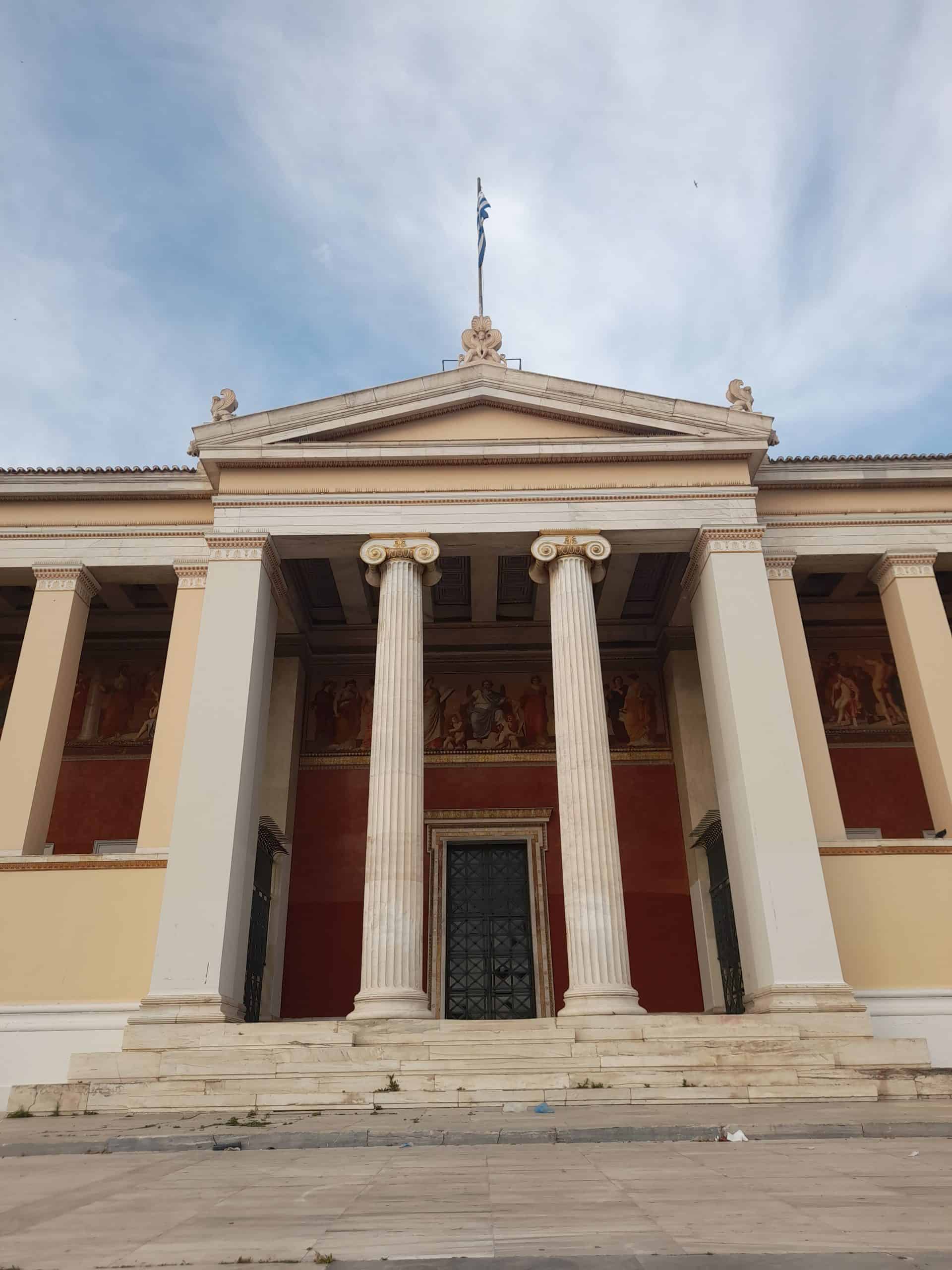
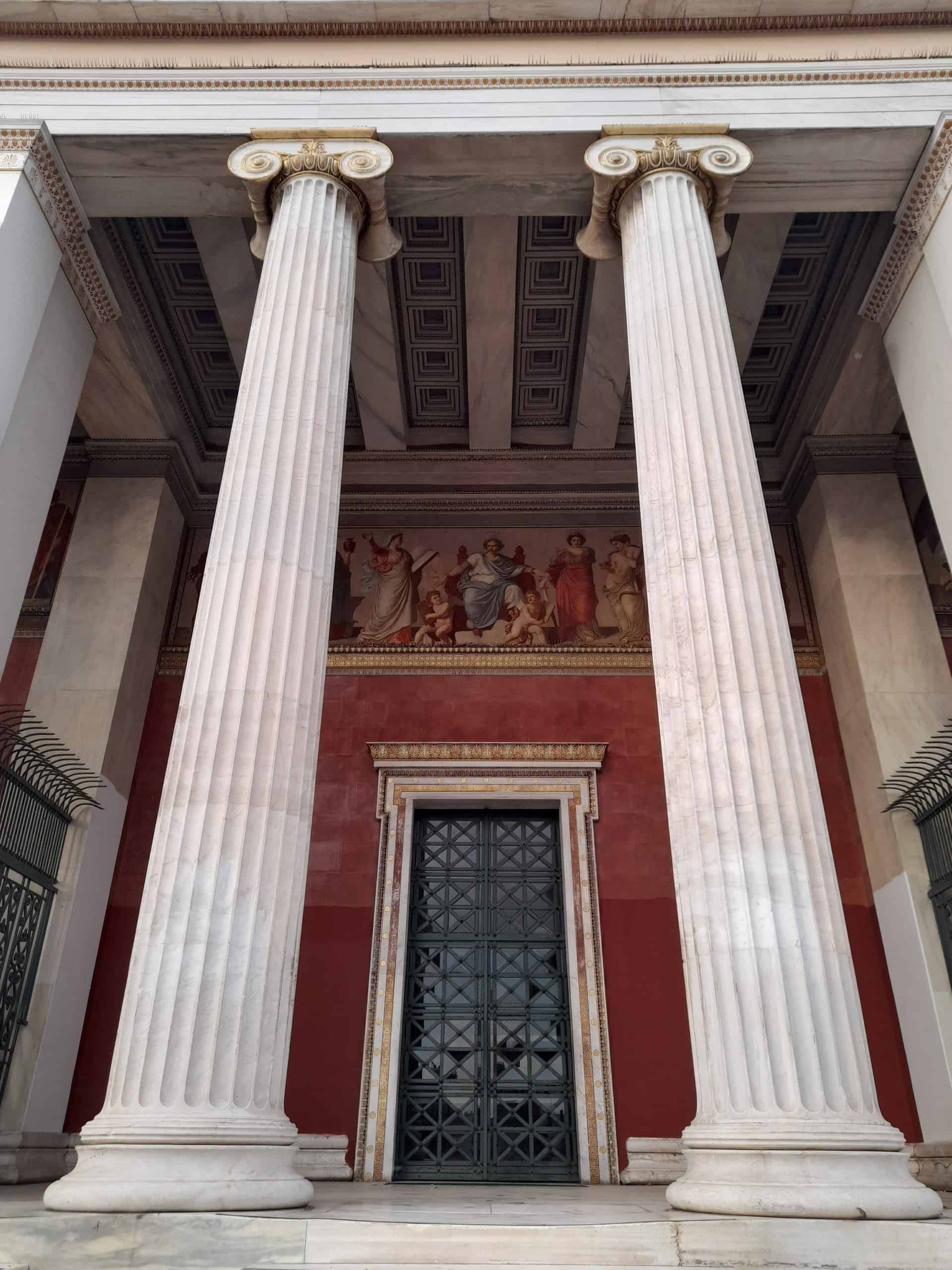
The impressive National Library of Greece is one of the grandest structures in the Greek capital. It holds over a million books and magazines and was designed by Danish architect Theophil Freiherr von Hansen. The library has 4,500 Greek manuscripts, along with many archives of the Greek Revolution.
The Academy of Athens
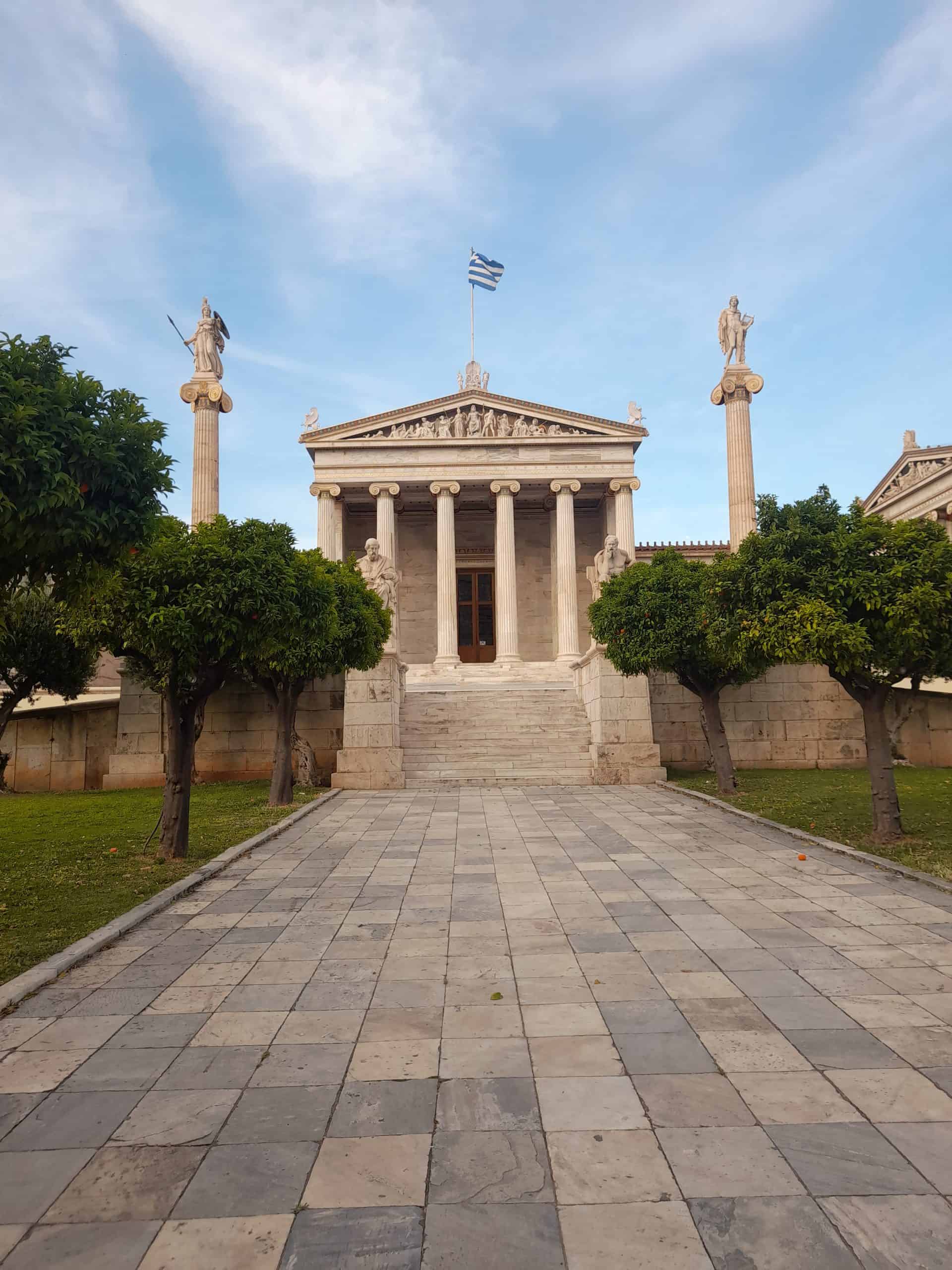
The Academy of Athens sits adjacent to the National Library of Greece. It is another structure designed by Theophil Hansen, along with the National Library, and the University of Athens.
The construction follows the ancient ionic order of architecture, with porticos and pediments decorated with statues and gildings in polychromy. Statues of Socrates and Plato sit at the entrance to the building, welcoming those that enter.
The Temple of Poseidon, Sounion
The Temple of Poseidon at Cape Sounion is one of the most popular day trips that people take from Athens. While the temple may not be in Athens proper, it is still within the vicinity of Attica.
The temple is dedicated to Poseidon, god of the sea. Its dramatic location – perched atop a craggy cliff overlooking the Aegean, is fitting.
The structure dates back to 444 BC – the same year that the Acropolis’ Parthenon was made. On arrival, you will note that there are some similarities between the two structures.
Historically, this was an important landmark in Greece for travelling merchants and sailors. When they saw the columns of the Temple of Poseidon, they knew that they were close to home.
Parting Words
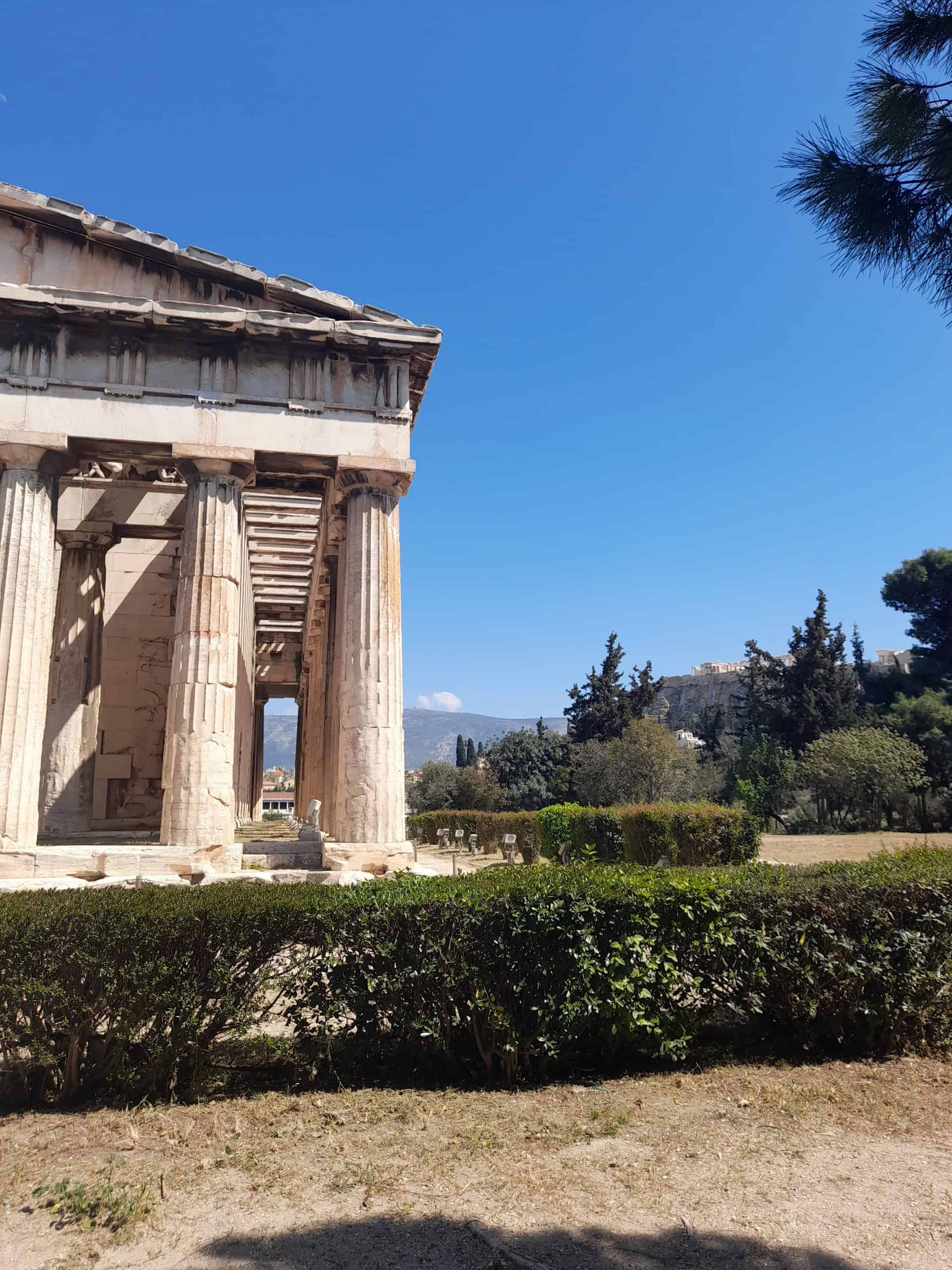
Do you have any additional questions about landmarks in Athens or about planning a trip to Greece in general? I have lived here since 2017 and I am happy to assist with any questions you may have.
Safe travels! Geia sou, Melissa xo
